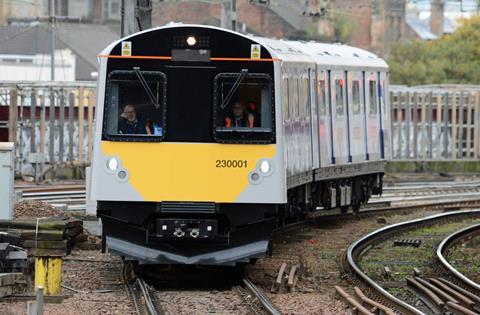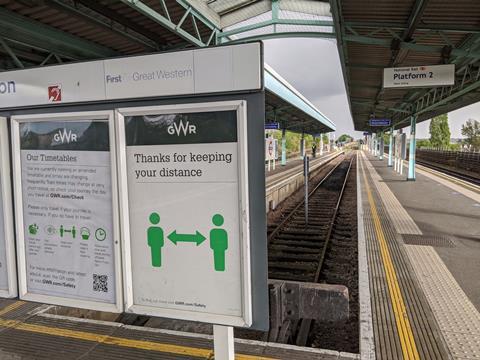
UK: Great Western Railway has signed an agreement to test Vivarail’s Class 230 battery multiple-unit and fast charging technology under real-word conditions on the 4 km non-electrified branch between West Ealing and Greenford in west London.
Part of Vivarail’s family of multiple-units produced from London Underground train bodyshells and bogies, the battery-only trainset was demonstrated at the COP26 climate summit last year. It is equipped with lithium ion batteries supplied by Hoppecke, and has achieved a range of 100 km under test conditions.
Vivarail’s track-based Fast Charge equipment will be installed at West Ealing station to enable automatic recharging between trips in 10 min. Fast Charge uses short lengths of conductor rail which are only live when the train is above them. An automatic electronic ‘handshake’ between the train and charger occurs when the train comes to a stand, and the conductor rails are then energised. When the driver initiates the departure sequence the conductor rails are de-energised before the train moves off.

Development of the Fast Charge technology received funding from Innovate UK, and the Greenford trial is being supported with £2·15m from the Department for Transport’s Rail Network Enhancement Pipeline.
The Greenford branch is currently worked using a two-car Class 165 Turbo DMU which normally operates 33 round trips totalling 264 km per day. The line has a maximum speed of 65 km/h and three intermediate stops; the end-to-end journey time is 12 min.
The battery train trials are planned to take place later this year. The line would ‘lead the UK in bringing in new, emission-free battery electric trains combined with our world-leading charging system’, said Vivarail Managing Director Steve McBride on February 15.
‘Battery technology has been identified as a key part of the network’s solution to reach net zero and it is the ability of our charging system that provides the key to replacing diesel trains. I believe it will mark a step-change in showing the innovation within our industry.’



